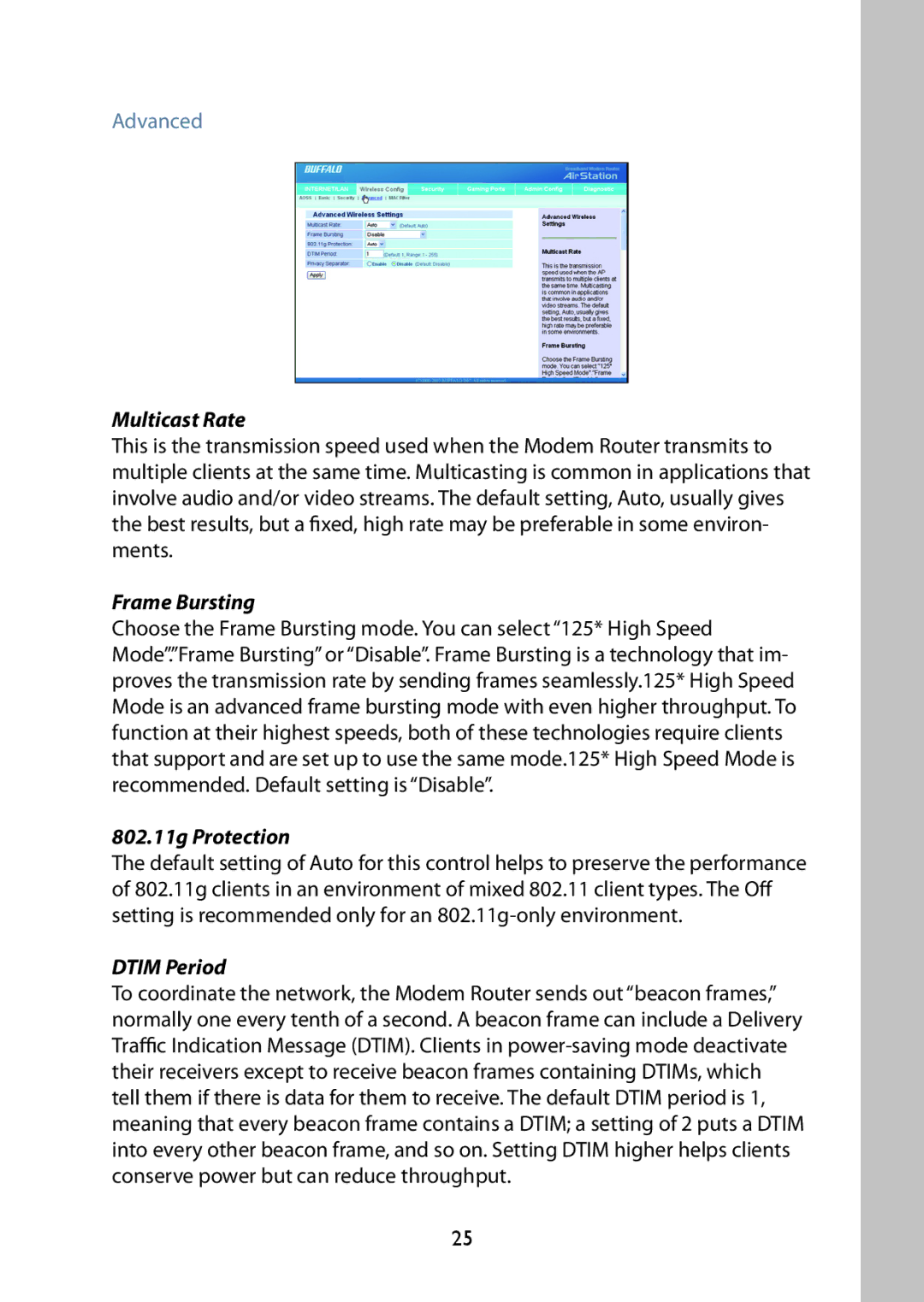
Advanced
Multicast Rate
This is the transmission speed used when the Modem Router transmits to multiple clients at the same time. Multicasting is common in applications that involve audio and/or video streams. The default setting, Auto, usually gives the best results, but a fixed, high rate may be preferable in some environ- ments.
Frame Bursting
Choose the Frame Bursting mode. You can select “125* High Speed Mode”.”Frame Bursting” or “Disable”. Frame Bursting is a technology that im- proves the transmission rate by sending frames seamlessly.125* High Speed Mode is an advanced frame bursting mode with even higher throughput. To function at their highest speeds, both of these technologies require clients that support and are set up to use the same mode.125* High Speed Mode is recommended. Default setting is “Disable”.
802.11g Protection
The default setting of Auto for this control helps to preserve the performance of 802.11g clients in an environment of mixed 802.11 client types. The Off setting is recommended only for an
DTIM Period
To coordinate the network, the Modem Router sends out “beacon frames,” normally one every tenth of a second. A beacon frame can include a Delivery Traffic Indication Message (DTIM). Clients in
25
